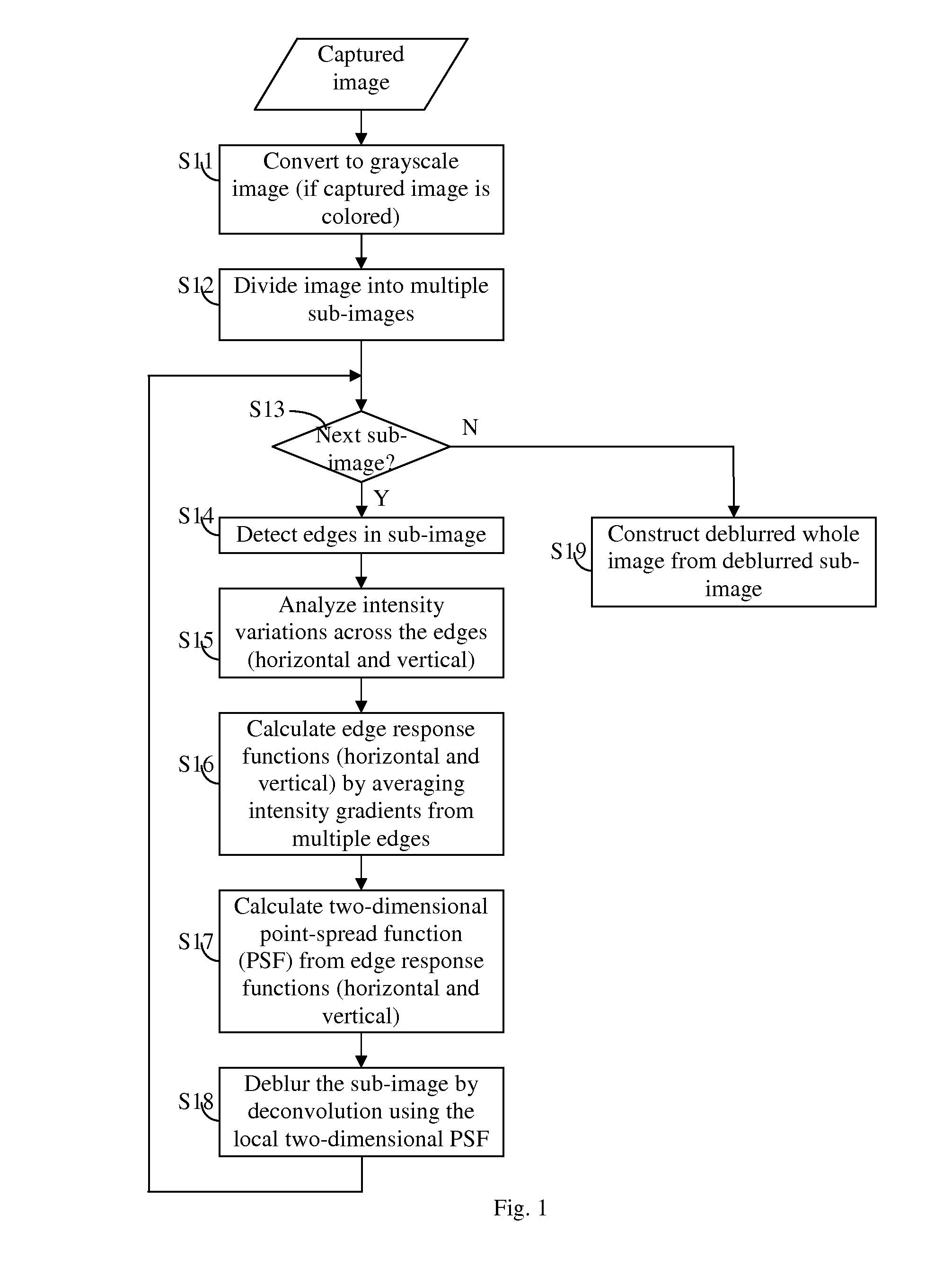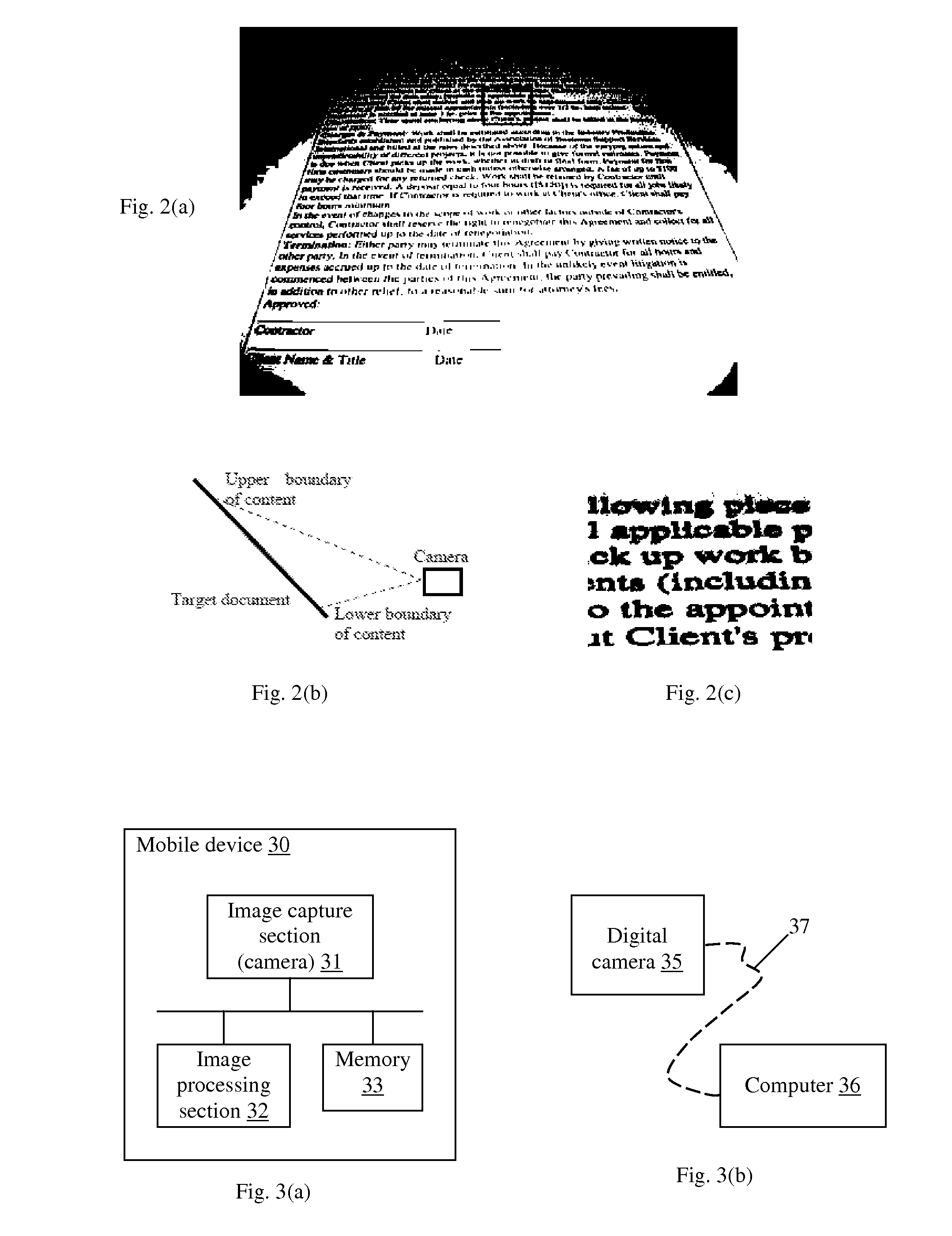Adaptive deblurring for camera-based document image processing
a document image and adaptive deblurring technology, applied in the field of image processing, can solve the problems of limited computing power and non-uniform illumination, and achieve the effect of reducing the adverse effect of variable and location-dependent defocus and improving image quality
- Summary
- Abstract
- Description
- Claims
- Application Information
AI Technical Summary
Benefits of technology
Problems solved by technology
Method used
Image
Examples
Embodiment Construction
[0023]To obtain higher quality images for a camera-captured document image, deconvolution can be utilized to reduce blur in the image. Because the amount of defocus is dependent on location, a single point spread function (PSF) is not a good representation of the imaging system. Embodiments of the present invention provide an adaptive deblurring method to improve the image quality locally.
[0024]Optical blurring can be well modeled as low pass filtering that significantly reduces high spatial frequency signals in images. As a result, the impact of defocus on images is most significant on edges. By analyzing the intensity variations across edges in an image, the edge response of the camera can be estimated if it is assumed the edges in the targets (the objects being photographed) are sharp, as is the case in many documents, where characters and the background often form sharp transitions in intensities. Others have described methods by which sharp edges are artificially created in ima...
PUM
 Login to View More
Login to View More Abstract
Description
Claims
Application Information
 Login to View More
Login to View More - R&D
- Intellectual Property
- Life Sciences
- Materials
- Tech Scout
- Unparalleled Data Quality
- Higher Quality Content
- 60% Fewer Hallucinations
Browse by: Latest US Patents, China's latest patents, Technical Efficacy Thesaurus, Application Domain, Technology Topic, Popular Technical Reports.
© 2025 PatSnap. All rights reserved.Legal|Privacy policy|Modern Slavery Act Transparency Statement|Sitemap|About US| Contact US: help@patsnap.com



